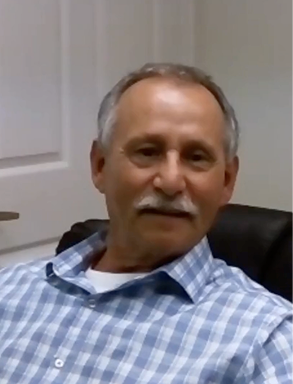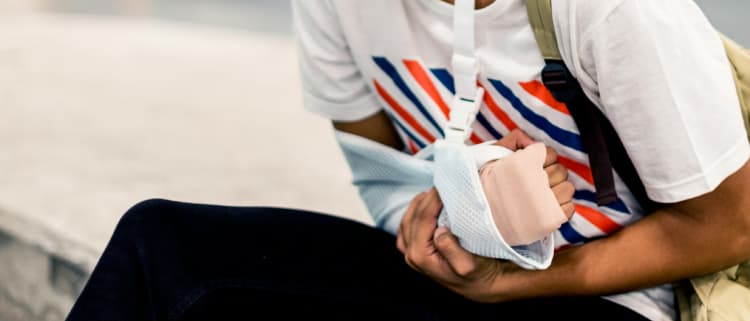of Mind
Feel confident knowing your case is in expert hands, so you can focus entirely on healing.
Done for You
We handle every aspect of your case, from referrals to the best doctors to paperwork and negotiations.
Recovery
Our mission is to make you whole again by recovering compensation for all your losses—medical bills, lost wages, and more.
Stories of Triumph
Distracted driving is all too common on our highways and roads, and it can have fatal consequences. In fact, the National Highway Traffic Safety Administration found that over 3,000 people died in 2020 because of distracted driving accidents.
If you or a loved one have been hit by a distracted driver, you’re probably experiencing some terrible effects, like serious medical injuries, lost wages, and mental trauma. It’s vital that you exercise your rights and receive appropriate compensation for your losses.
Consider contacting our team of compassionate California distracted driving accident attorneys at Silva Injury Law today.
What Are The Causes Of Distracted Driving?
Most of us imagine that cell phones are the only cause of distracted driving, but the truth is that distracted driving can stem from many causes.
People can also be distracted by:
- Checking a GPS unit,
- Eating and drinking,
- “Rubber-necking” and staring at objects on the side of the road,
- Talking to vehicle passengers,
- Reaching to grab something from the passenger seat or rear row,
- Reading billboards and highway signs,
- Adjusting the radio or media player, and
- Putting on makeup.
Although all of these acts can cause distracted driving accidents, some are worse than others.
Recent Results
Are There Different Types Of Driving Distractions?
Yes. Different driving distractions, including the examples above, affect people in a variety of ways. In fact, distracted driving experts group distractions into three categories.
Visual distractions
Visual distractions refer to anything that causes your gaze to wander off the road. Because of these distractions, you won’t notice changes in traffic or the movements of the vehicles in front of you.
Mental distractions
Driving requires more than just keeping your eyes on the road. It also requires that the driver actively focuses on the road. Mental distractions make a driver stop paying attention to the road and other vehicles. These kinds of distractions can be especially dangerous because mentally distracted drivers can still look like they’re paying attention.
Manual distractions
Until self-driving becomes commonplace, every driver has to keep their hands on the steering wheel at all times. Manual driving distractions cause you to take one or both of your hands off the wheel, making you unable to respond to upcoming obstacles or hazards.
Some of the distractions we listed above affect drivers in only one way. Others affect drivers in multiple ways. One of the reasons that texting is hazardous for drivers is that it is a visual, mental, and manual distraction.
How To Prove Distracted Driving
Like any other kind of lawsuit, you need to have compelling evidence to win your case. One of the advantages of a dedicated California distracted driving accident lawyer is that they can collect several kinds of important evidence to help you prove your case.
Cell Phone Records
A capable distracted driving attorney can subpoena the distracted driver’s cell phone provider to obtain their phone use records. With these records, you can see whether the distracted driver was texting or talking while driving. Cell phone records can also show what apps the distracted driver was using at the time of the accident.
Official Police Reports
Police officers typically complete accident reports after arriving at the scene of an accident. These reports contain a wide variety of helpful information, including information about the vehicles involved and any environmental conditions. These reports will also indicate whether the distracted driver was cited or ticketed for distracted driving.
Eyewitness Testimony
Unless your distracted driving accident occurred in a remote place or very late at night, there are bound to be witnesses who saw what happened. Our attorneys can track down any eyewitnesses and obtain their written or oral testimony.
Photographic Evidence
Traffic cameras, dashcams, and bystander video footage can provide insight into what the distracted driver was doing right before or during the relevant events. This kind of evidence can also help show the severity of the accident and how it damaged your property or person.
What Is The Average Settlement For A California Distracted Driving Lawsuit?
There’s no good answer to this question. Most lawsuit settlements are confidential, making it impossible to obtain good information on what the average settlement is. On top of that, every distracted driving case is different. The settlement amount depends on how serious the distracted driving accident was, who was involved, and other circumstances.
However, a capable lawyer may be able to review your case and use their own past experience to estimate what you can expect to receive as a settlement.
Promoting Healing Through Compassionate Advocacy
We believe that our duty goes beyond achieving large monetary awards for our clients. We strive first to be decent human beings who seek not to stir up fights, but to solve problems.
Let Our California Distracted Driving Accident Attorneys Help You
Here at Silva Injury Law, our team specializes in holding distracted drivers responsible. However, we also strive to help our clients find healing and restoration. We treat our clients as if they were our own family, not just customers. If you want to learn more about what our clients think, read some of our testimonials or review our recent success story. When you’re ready to set up a free initial consultation, give us a call or contact us online.
Our experienced legal team also handles other types of cases, including:


















 EMAIL
EMAIL  Ask AI
Ask AI  Access
Access